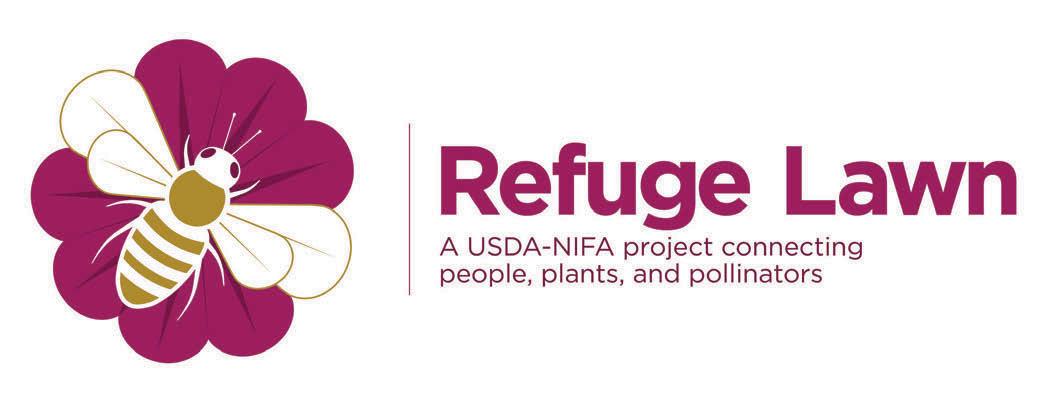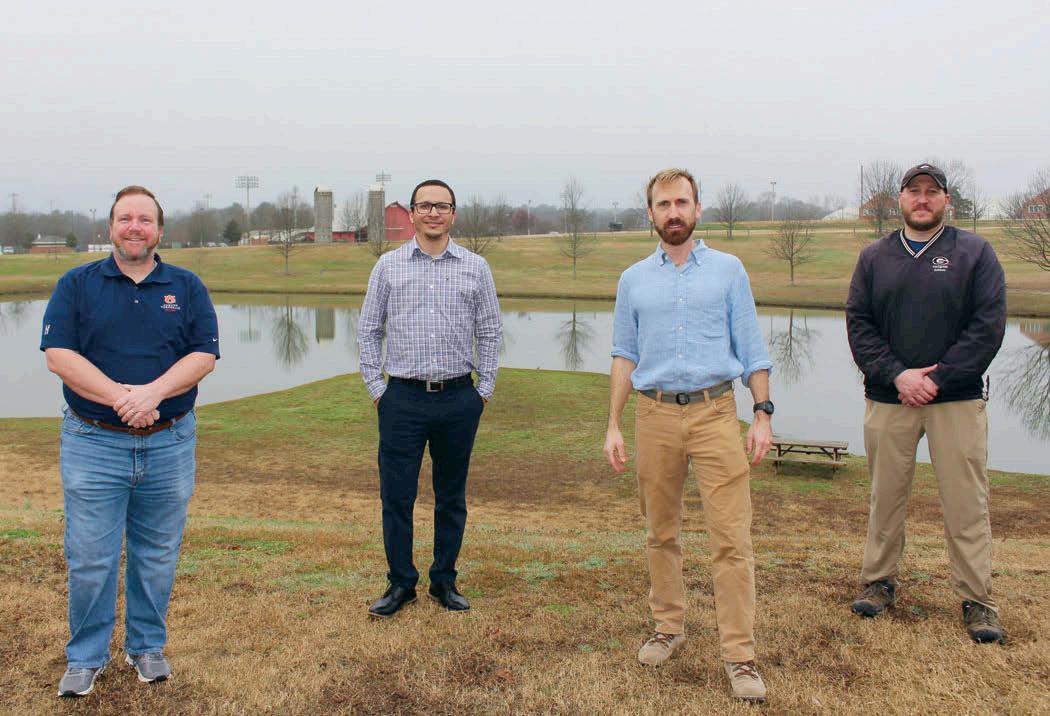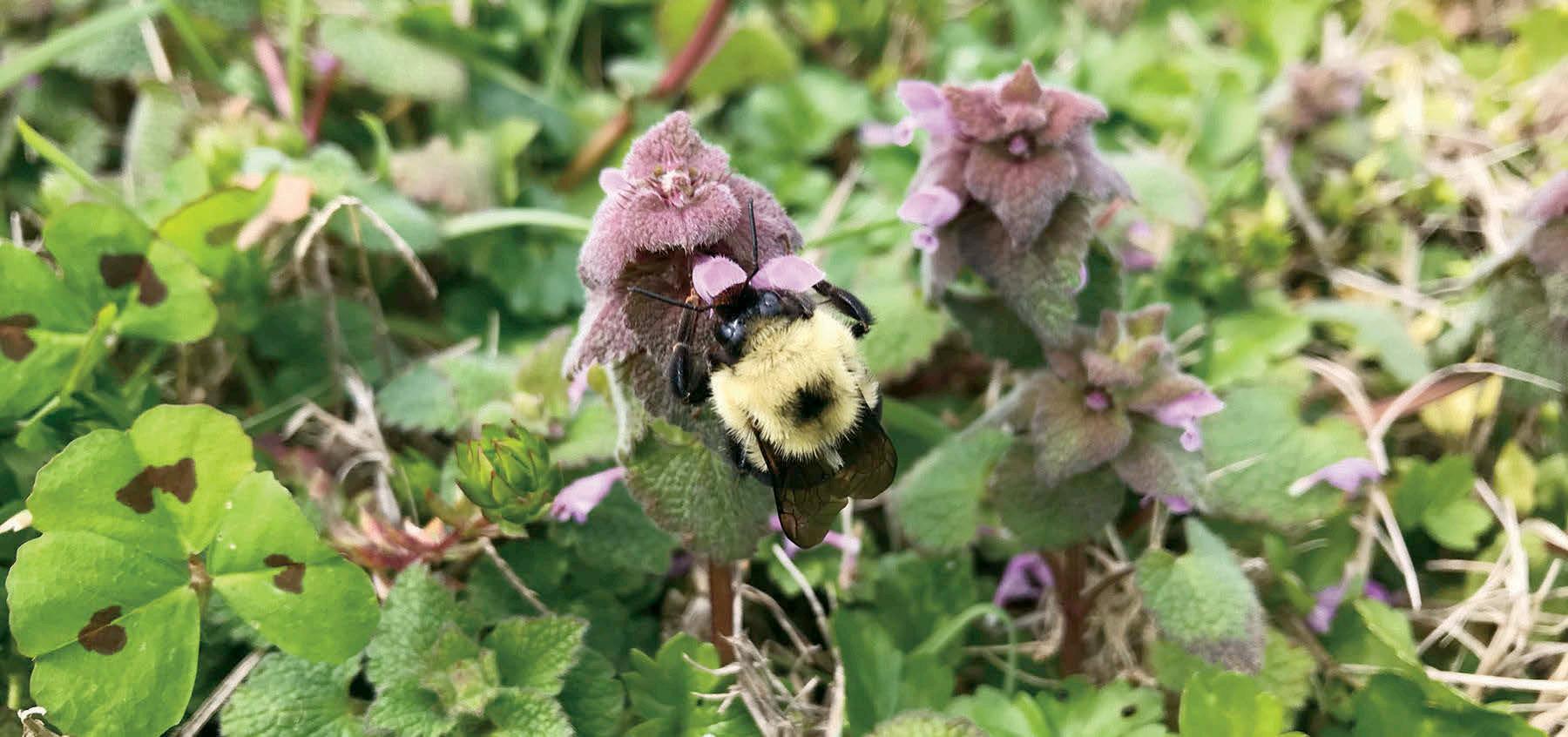
4 minute read
Partnership for Pollinator Friendly Lawns
By Jay McCurdy, PhD, and Isadora de Souza
There are an estimated 40 to 50 million acres of turfgrass in the United States, approximately 40 percent of which is maintained lawn around homes, places of business, and institutions. These living systems play an important role in society by providing places of gathering, recreation, and community cohesion.
Turfgrass also provides important ecological services, such as carbon sequestration, noise abatement, and temperature moderation. Unfortunately, because the modern “American lawn” is often maintained as a monoculture, it lacks species richness and habitat for pollinating insects. However, ongoing USDA ARS studies are exploring turfgrass’ role as a pollinator food source. (See the report on turfgrass being rethought as pollinator food source on page 36 of this issue.)
In addition, Mississippi State University, Auburn University, and the University of Georgia are partnering to enrich lawns through best management practices (BMPs) and inclusion of amenity plant species that will attract and sustain pollinating insects.
In April 2020, we proposed a project to create BMPs and stakeholder training that will result in more sustainably managed turfgrass systems for the improvement of pollinator habitat. The USDA-National Institute of Food and Agriculture funded our $493,000 project in the beginning of 2021. The project will employ at least three graduate students (one at each institution) for the project. At Mississippi State, coauthor Isadora de Souza will manage much of our state’s research responsibilities.
As part of the project, we will identify pollinator friendly turfgrass alternatives and amenity forb species that meet the societal and cultural demands of traditionally maintained southeastern United States urban greenspace while also increasing pollinator habitat resources. The project will disseminate findings through a comprehensive Extension outreach program designed to be delivered by specialists and county agents. This program will include field days, small-group trainings and webinars, publications, and other outreach activities (e.g., master gardeners, regional and national stakeholder meetings). A website (RefugeLawn.com) will be created for stakeholder interaction, and we also are assembling a stakeholder advisory board. Follow our progress on Twitter: @RefugeLawn. Our research will address the following: 1. Pollinator habitat and pollinator visits on common turfgrass weeds and other amenity turfgrass forbs of the southeastern United States. 2. Effects of turfgrass species selection and cultural practices on forb establishment and persistence, as well as effects upon pollinator visits. 3. Stakeholder preference for pollinator habitat within maintained turfgrass systems.

Refuge Lawn investigators (left to right): Dr. David Held (Auburn University), Dr. Edicarlos de Castro and Dr. Jay McCurdy (Mississippi State University), and Dr. Gerald Henry (University of Georgia).
Spring “ephemerals” such as the native spring beauty (Claytonia virginica) and the introduced hairy buttercup (Ranunculus sardous) are common in southeastern lawns, but little is known about their contribution as pollinator habitat, nor is much known about their cultivation.

Current BMPs for pollinator habitat inclusion:
1. Add flowering plants. Increasing the floral resources in lawns and public greenspace can be achieved by mowing less frequently, planting flowers, converting some grass areas to flowers, and enhancing grass with flowers. 2. Let spring “ephemerals” flourish. Spring emerging plants (sometimes considered “weeds”) provide rich rewards for pollinators that are active early in the spring, and they are especially beneficial for native and less common pollinator species, which are less likely to be adapted to monoculture environments. 3. Delay and reduce mowing frequency. Decreased disturbance is associated with greater abundance and richness of pollinators and floral resources. Since many domestic gardens and public greenspaces are comprised of large lawns, reducing and delaying mowing intensity can have a great effect. 4. Avoid broadcast applications of insecticides to lawns and gardens that may negatively affect pollinating insects. Broadcast applications should be applied only according to label directions. Use commonsense and avoid application to flowering plant species. Turfgrass managers can minimize pollinator exposure to insecticides by restricting foliar insecticide applications to early morning or late evening. 5. Include flowering shrubs, trees, and forbs in the landscape. Increase wild, unmanaged areas (including native weeds), and leave a minimally maintained refuge area. These commonsense practices can be aesthetically pleasing when a “beauty strip” of clean-cut lawn or mulch is included adjacent to or surrounding the refuge. 6. Increase “nidification” (nest-building) by improving nesting sites. Bare ground for soil nesting species and trap nests for cavity nesting bees and wasps are easy to add to any lawn. 7. Create biodiverse corridors. Habitat connectivity is important for all wildlife species, not just pollinators.
Roads, fences, and expansive monoculture (both of lawns and agriculture) contribute to habitat segmentation. By coordinating with neighbors and municipalities, landscape design and its ecosystem services are enhanced by connecting habitats. 8. Establish institutional and organization strategies for a coordinated approach. Effective knowledge exchange among policy makers, scientists, stakeholders, and industry professionals is key to effectively increasing pollinator habitat. It is easy to imagine a coordinated approach for national, regional, and local greenindustry companies to adopt these BMPs. Forward thinking companies will find a way to include “refuge lawns” on stakeholder properties—and they’ll make money doing it. (See the article on page 42 of this issue for ideas on alternative products sod producers have developed to meet the specific needs of the customers within their regional markets.)

A bumblebee (Bombus species) foraging in deadnettle (Lamium purpureum). Deadnettle is an introduced species that is widespread in the southern United States and hosts many early-spring pollinators.
Dr. Jay McCurdy is a turfgrass extension specialist and an associate professor. Isadora de Souza is a graduate research assistant and PhD student. She holds a Master of Science in Entomology from Federal University of Lavras in Brazil. Both are within the Department of Plant and Soil Sciences at Mississippi State University. Editor’s Note: This article originally appeared in Mississippi Turfgrass, the Mississippi Turfgrass Association magazine. D ant










